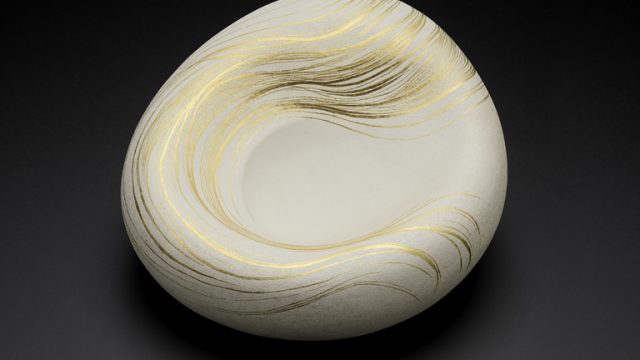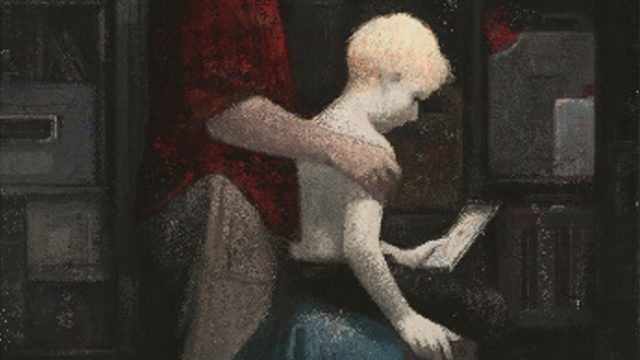I am one of the V&A Visitor Services Ambassadors and I have also volunteered to help look after the V&A bees. The V&A installed four beehives in a sheltered corner of the roof of the museum in spring this year. The V&A bees originate from populations in Northern Italy and Wales. The hives were installed by the London Honey Company run by Steve Benbow, who looks after the bees for us and who also look after similar hives at Tate Britain, Tate Modern and at Fortnum and Mason. Urban bees thrive in London, and the V&As bees forage within a three mile radius of the hives at the V&A. The bees have settled in well and have produced a good crop of honey this year.

© Rena Melnyczuk
Steve Hyde, Head of Estate who can be seen here has been the driving force behind the bee project. It is thanks to him that it is up and running. He continues to personally supervise the project and ensure it remains sustainable.

© Rena Melnyczuk
This is Val Blyth who is a Preventive Conservator in the Conservation Science Department here at the V&A, and has an active interest in insect pests in the museum. It was very important to consult with Val and get the go ahead from her for the installation of the hives. Val has already written a post about the bees on the V&A Conservation Blog. She continues to take an active interest in the bee project.

© Rena Melnyczuk
Steve Benbow from the London Honey Company manages our bees. You may have seen Steve on television recently in the Horizon special What’s Killing Our Bees? Steve has also written a book called The Urban Beekeeper: A Year of Bees in the City. In this series of photos you can see Steve harvesting the honey from the V&A bees.
Steve starts to remove the boxes with honey in them. These boxes are called ‘supers’. The lower super is the main body or ‘brood chamber’ and those stacked on top honey supers. Once the brood chamber is filled a strong colony will store honey in the supers. To the left of Steve you can see the frames which surround the honey comb. Each super contains about 10 frames.

© Rena Melnyczuk
This is a smoker. The smoke has an overpowering smell which masks any pheromones the bees might emit reducing danger signals which the bees pass on to the next bee and so suppresses defensive behaviour. It also makes the bees think there is a fire. They know that they must leave the hive if there is a fire so they load up with honey. Smoking the bees make some of the bees go into the honey cells and ignore everything else.

© Rena Melnyczuk
Steve removing a frame of honey comb from one of the supers. Look at all our beautiful, hardworking bees.

© Rena Melnyczuk
This is Josh Wright who works with Steve Benbow. The supers are placed in plastic bags and transported to The London Honey company warehouse where the honey will be extracted.

There is no lift near the location of the bees so the supers have to be lowered to the ground by harness as they are extremely heavy. For those of you worried about health and safety – don’t be! Josh has his harness safely secured so he cannot fall.

© Rena Melnyczuk
Honey ahoy! We look forward to seeing the honey for sale in the V&A shop later in the year.



If this is the website for the sale of V&A honey, I have no idea where to buy the
honey.